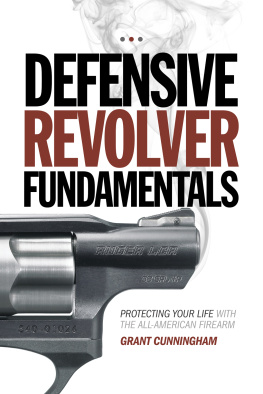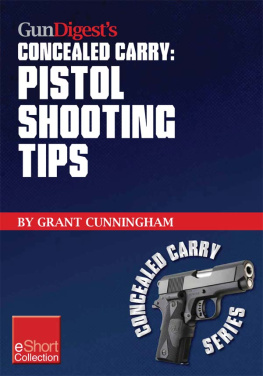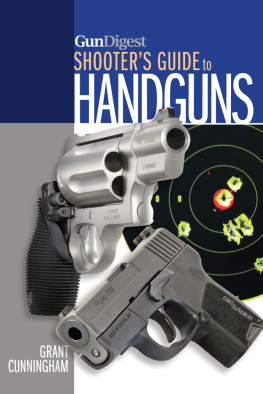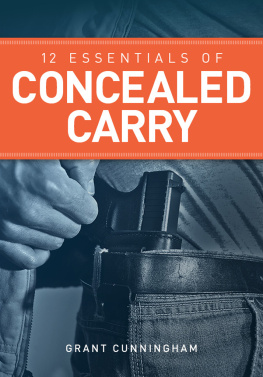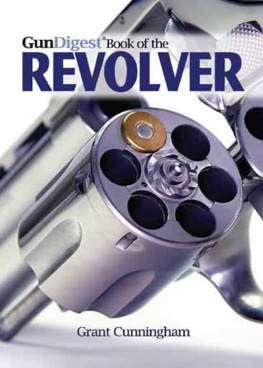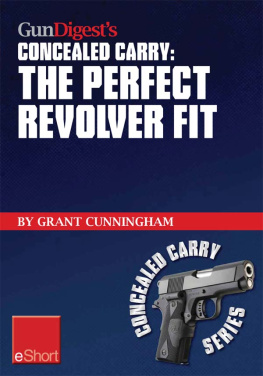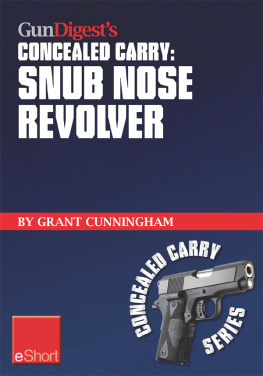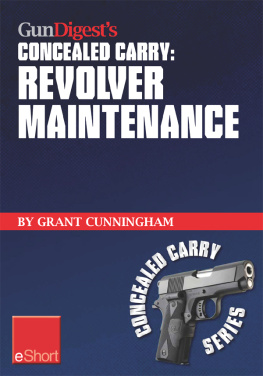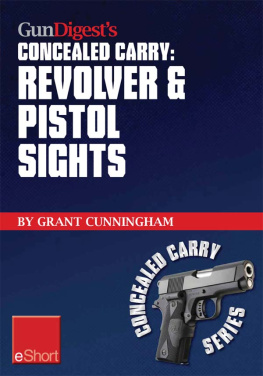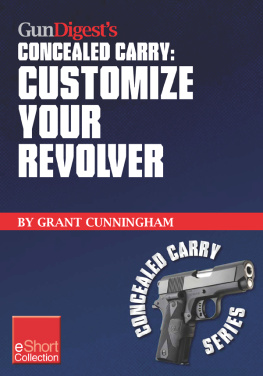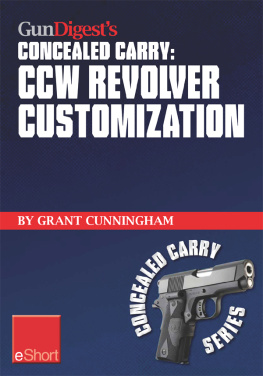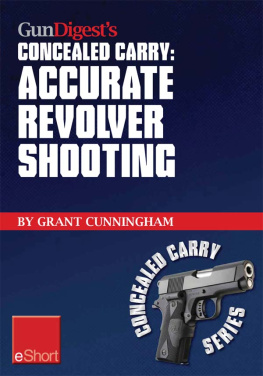Sign up for our newsletter and receive special offers, access to free content, and information on the latest new releases and must-have firearms resources! Plus, receive a coupon code to use on your first purchase from GunDigestStore.com for signing up.
Foreword
by Rob Pincus
When Grant Cunningham and I first met (over the internet, of course), I was immediately confused. His thoughts in regard to training were modern, insightful and refreshing. But, his website was full of revolver pictures. Those two things dont normally go together. The first center-fire handgun that I spent any significant amount of time with, and the gun that I really learned to shoot with, was a Smith & Wesson Model 19 Combat Magnum. As the son of a 1970s cop, revolvers were the only serious defensive handgun option. Naturally, I shot .38s out of it most of the time. The Model 19 still holds a special place in my heart and, to this day, I carry S&W revolvers (albeit J-Frames) for defensive purposes from time to time. Over the past few years there has been a resurgence of interest in the viability of the revolver as a legitimate choice for personal defense. This resurgence happened to coincide with a few key things in my world.
First, I had gotten rather complacent in regard to probable threat profiles and the likelihood of actually needing more than five shots out of a snubnosed revolver during the several years I lived in the imaginary village of Telluride, Colorado, and had been carrying a S&W 642 more often than any other gun.
Second, I was trying to more publicly skew my defensive firearms teaching and advice towards what actual was happening in the real world, as opposed to playing towards the (seldom seen in the actual firearms owning public) one gun is no guns, carry three spare mags and two flashlights type of Tactical Readiness Rhetoric that had taken over some aspects of our communitys discussions over the preceding decade. In the real world, lots of people carry small revolvers.
Third, I had met, and started spending time with, Grant Cunningham.
It turned out that the reason Grant had all those wheel-gun pictures on his website was because he is pretty much the Greatest Living Revolversmith. Before that goes to Grants head too much, lets put that grandiose statement in perspective: In the 80s you couldve easily started fist fights over trying to award that title to anyone but, in the second decade of this century, there simply arent many people even vying for the title. The fact is that much of our community has dismissed the revolver as a viable option. The cutting edge of firearms development, defensive training and even our media coverage has left the wheelgun behind. Does this mean that the title of Greatest Living Revolversmith is easy to earn? Absolutely not, quite the contrary: To even make a living as a revolversmith nowadays means you must be something special! Grants work as a technician and as an artist is a product of his knowledge, meticulousness, passion and dedication to what some probably think of as a lost art. His work is so good, in fact, that he is bringing back the defensive revolver as an option for some of us that grew up with them and even introducing the younger generation to the fact that the option exists. I still carry that same 642 from time to time but, now that it has been worked on by Grant, I promise you that I enjoy shooting it much more often than I did a decade ago! Grants ability as a craftsman isnt what this book is about, however, so it shouldnt be what this foreword is about either. This book is about choosing, training with and using the revolver as defensive tool. I think it is important to note that Grants knowledge, meticulousness, passion and dedication to the revolver as a craftsman heavily inform his opinions as an instructor in the art and science of using a revolver as a defensive tool. It is important to understand the incredible amount of detail, depth of research and thought that has gone into this book. Grant is an established expert and has been for many, many years. Yet, if you look at what he teaches, you see new information, progressive concepts and cutting-edge insight. Grant has continued to evolve and spends at least as much time working through pages of research and experimenting with training doctrine as he does filing metal and polishing parts. In 2009, when it was time for me to add a Defensive Revolver DVD to the Personal Defense Network library, I tapped Grant. The revolver might be your grandfathers tool, but PDN isnt your grandfathers training resource. I needed to find a balance between the old and the new. I needed someone who truly understood the revolver as a mechanical device and could apply post-modern training concepts to its use. Grant Cunningham was the only real option and I am indebted to him for working with me to produce that DVD.
It would be disingenuous to omit the fact that Grant is a certified Combat Focus Shooting Instructor from this essay, especially as he is one of the leaders in our CFS Community. In fact, it would not be an understatement to say that he has been one of the most influential instructors in the program. His ability to communicate information, especially the way he can distill the essence of a concept from a cumbersome explanation and efficiently get a student to grasp the important principles, is certainly the trait that has made him an invaluable asset to our cadre of teachers. That ability to communicate spans his spoken presentation and his written words, the latter of which you are about to experience. Over the years that Grant and I have known each other, he has certainly taught me much about the revolver, about teaching and about our community. It is a great honor to introduce him to those of you who arent already familiar with his work, and to share my thoughts with those of you who already know how valuable he is to anyone who would consider the revolver as a defensive tool. Enjoy this book the first time through, then go back and revisit the details. The defensive revolver isnt an antiquated afterthought. It is a legitimate option that deserves a progressive and practical training approach, which is exactly what Grant presents in this book.
Train well!
Rob Pincus
Owner, I.C.E. Training Company
Introduction
THE WORST-CASE SCENARIO
WHAT WE TRAIN FOR AND WHY
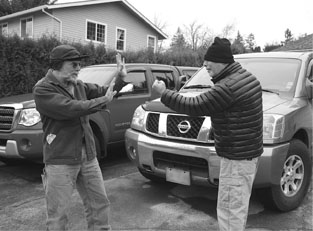
An escalating incident takes time, has an aspect of mutual agreement.
Those who have chosen to arm themselves, whether in their home or legally on the street, face the prospect that someday, somewhere, they may have to shoot someone in justifiable self defense.
Thats what this book is about.
Defensive fights, as violence expert Rory Miller points out1, are idiosyncratic things; no two are alike. A lethal force incident is no doubt the pinnacle of all defensive encounters, but reason suggests that even at the top there is a hierarchy of severity, a scale of danger and our response to it.

